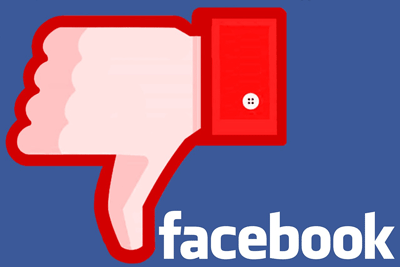Social networks can’t hold onto teen users, but that’s because of the nature of teens rather than the technology behind any particular network. Center director Jeffrey Cole explains why.
______________________________
By Jeffrey Cole
 The Center has been tracking digital use in 35 countries for the past 18 years. In that time, we have discerned some powerful trends and made some wide-reaching predictions. Happily, our predictive success rate has been very high — that has come from the quality of our data.
The Center has been tracking digital use in 35 countries for the past 18 years. In that time, we have discerned some powerful trends and made some wide-reaching predictions. Happily, our predictive success rate has been very high — that has come from the quality of our data.
In this column and the next, I want to look at two of my most controversial predictions and see what time has said about them. This week: teenagers and social networks.
Facebook will not be able to hang on to their teenage users.
Rupert Murdoch bought MySpace for $580 million in 2005 — saying it would allow him to reach the teenagers he could no longer reach through his newspapers and who were even getting difficult to reach through his television stations. When he bought MySpace, I said that it was a great investment (the reporters who covered the story never mention that part of the quote), but that he would never be able to hang on to the teenage users of MySpace.
It was a great investment. Almost as soon as Murdoch bought it, MySpace signed a $900 million ad share deal with Google. MySpace sold a lot of advertising before 2011, when Murdoch sold it to a group of investors, including Justin Timberlake, for $35 million. Although Murdoch would have liked to get more than he paid, he made a lot of money along the way, and it was a great investment.
Looking at the young audience of MySpace in 2005, we saw that to them a social network was like a nightclub: when the nightclub got too crowded, or the “uncool” kids started showing up, they were out of there. To teenagers, the worst thing that could happen to them in a nightclub (other than someone with a bomb or gun walking in) was to run into their parents.
_________________________________________________________________________________________________
Recently, I did a briefing at Snap in Southern California, where I talked about Facebook losing its teenage users. The Snap team smiled in satisfaction at beating Facebook with the audience that means the most to them. I looked at them and explained: “Don’t smile — the same thing will happen to you.”
_________________________________________________________________________________________________
All of a sudden, teens’ parents wanted to friend them on social media. How long would they hang around in a place with their “cool friends” when their parents became part of the scene? The nightclub comments were covered extensively in the press and became viral. I have never tried to be viral and am always surprised as what does become viral. Usually I would prefer to be known for something else.
In 2008, when we released our eighth report, reporters asked, “OK, you got it right with MySpace, what’s going to happen to Facebook?”
I said the exact same thing would happen to Facebook with two important distinctions:
- Facebook would grow for another 5-15 years. In 2008, it had about 400 million users. Today it has 2 billion users out of 7 billion people on the planet, but it is actually more impressive than that: 1.3 billion people, the Chinese, cannot get Facebook (by government rules) so Facebook reaches 2 billion out of 5.7 billion. And Facebook is even more impressive than that. The 5.7 billion number includes non-users of the Internet. Of the approximately 3-3.5 billion people who can get Facebook, 2 billion actually do: very impressive.
- I also said Facebook would never go away or die; it had become the phone directory to the planet, the place we go to find anyone or to communicate with our mothers, fathers, brothers, sisters or other relatives. Teens would continue to have a presence on Facebook, it just would not be the central place they communicate with their friends.
Reporters widely covered these predictions, and perhaps some of them thought I was sticking a finger in Facebook’s eye. It wasn’t. Some press said “Cole gives Facebook five years,” or that I predicted its demise. None of that is true.
Once again, I said that Facebook would grow and be around for a very long time, but that it would not be able to hang on to its youngest users. They would find another place to go as Facebook was populated by their parents and other “uncool people.”
This is not an indictment of Facebook or its appeal and features.
It is a fundamental feature of youth to want to listen to music that their parents don’t understand or like, drive a car that is different from theirs, and otherwise separate from them. Social networks, like nightclubs, are places teens can be themselves (or different than at home or school) with their friends. It is a natural part of growing up. We were not sticking out necks out predicting they would leave Facebook as their parents landed there.
It’s no surprise Facebook representatives resisted our analysis: while saying nice things about our work, they said in this instance we were wrong.
Within a few years we saw that teens were moving to Tumblr, part of the reason Yahoo bought the emerging network for $1 billion. That migration proved to be short-lived. Soon they were on the new network: Snapchat (now Snap).
Snapchat started with the original function of a user sending pictures and knowing they would disappear in ten seconds. It doesn’t take much imagination to see what kinds of pictures they would send. Perhaps Snapchat grew by teens internalizing their parents warning that they shouldn’t put anything on the web “they wouldn’t want to see on the front page of the newspaper.” Soon, users learned that the people who received these pictures could take screen shots, so they didn’t really disappear.
Snap also benefitted from the fact that it was much more complicated to learn and master than Facebook. Teens could hope their parents wouldn’t make the effort, so Snap would be safe from a parental invasion. Soon Snap became the preferred social network of teens and its founder, Evan Spiegel, turned down an offer of $3 billion from Facebook.
_________________________________________________________________________________________________
I said that Facebook would never go away or die; it had become the phone directory to the planet, the place we go to find anyone or to communicate with our mothers, fathers, brothers, sisters or other relatives. Teens would continue to have a presence on Facebook, it just would not be the central place they communicate with their friends.
_________________________________________________________________________________________________
Recently, I did a briefing at Snap in Southern California, where I talked about Facebook losing its teenage users. The Snap team smiled in satisfaction at beating Facebook with the audience that means the most to them. I looked at them and explained: “Don’t smile — the same thing will happen to you.” Snap is but one network on the teenage path of moving towards and then away from social networks.
About two years ago, in a financial statement, Facebook acknowledged that they were seeing less activity from teenage users. Our work similarly showed that the time teens spent on Facebook was declining.
In the past month, there has been a surge in new research and data that makes the case conclusively that teens do not view Facebook as the center of their social universe. Even though we predicted this 13 years ago with MySpace and 10 years ago with Facebook, it has been treated as a breaking news story. I was surprised it was such a big story when we said it in 2005 and 2008, and I am even more surprised that it is a big story now.
Social networks are where users show their carefully groomed images to their peers. They don’t want their parents around when they do so. The nightclub comparison turned out to be an accurate assessment of the phenomenon — first for MySpace, then Facebook and now Snapchat..
Next time: the prediction about the future of newspapers.
____________

Jeffrey Cole is the founder and director of The Center for the Digital Future at USC Annenberg.
See all columns from the Center.
February 21, 2018

